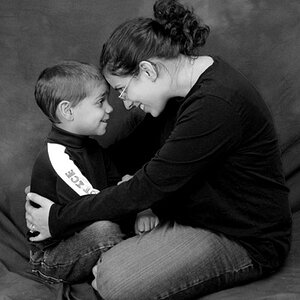Navigation
Install the app
How to install the app on iOS
Follow along with the video below to see how to install our site as a web app on your home screen.

Note: This feature currently requires accessing the site using the built-in Safari browser.
More options
You are using an out of date browser. It may not display this or other websites correctly.
You should upgrade or use an alternative browser.
You should upgrade or use an alternative browser.
Flash with high shutter speeds?
- Thread starter Aakajx
- Start date
- Joined
- Jul 8, 2005
- Messages
- 45,747
- Reaction score
- 14,806
- Location
- Victoria, BC
- Website
- www.johnsphotography.ca
- Can others edit my Photos
- Photos OK to edit
Yes... if your camera supports it, and if your flash supports it. Typically you will need either a manufacturer's flash (Canon, Nikon, etc) or a higher-end third-party unit which is fully TTL compatible. They will support high-speed sync.
- Joined
- Jul 8, 2005
- Messages
- 45,747
- Reaction score
- 14,806
- Location
- Victoria, BC
- Website
- www.johnsphotography.ca
- Can others edit my Photos
- Photos OK to edit
Unfortunately, I'm a Nikonian, and only speak the most rudimentary Canon... hopefully a Canonite will be along shortly.
lambertpix
No longer a newbie, moving up!
- Joined
- Sep 27, 2013
- Messages
- 938
- Reaction score
- 371
- Location
- Columbus, OH
- Can others edit my Photos
- Photos OK to edit
I have a Yongnuo 568. Using a 6d canon. TTL..
I've got a 7D and the 568ex, and it'll do HSS directly on the hotshoe or through 622c triggers. One thing I've noticed about that flash is that it's easy to set the flash to non-ETTL mode, and then it won't really communicate with the camera anymore.
If you've got a zoom lens, try zooming and check to see if the zoom on the flash "follows" the lens. I believe there's a setting in the camera as well for external flash control, and if memory serves, you can set it for 1st-curtain, 2nd-curtain, or HSS operation - that might also be worth a quick look.
JerryLove
No longer a newbie, moving up!
- Joined
- Jan 1, 2014
- Messages
- 413
- Reaction score
- 50
- Location
- Tampa
- Can others edit my Photos
- Photos OK to edit
I don't know what a "night shutter speed" is. I would have though it was slower (1/80 rather than 1/320).At a dirt track event I tried to use my flash and it wouldn't go above 160. Can you use a flash with night shutter speeds?
Setting to 1/80 isn't a problem on that camera, so I presume you are trying to go from 1/160 to , say 1/260. You can't. The Canon 6D can't sync with a flash faster than 1/160sec. It's an (apparently deliberate) limitation (to prevent it from competing with the 5DMkIII)
Braineack
Been spending a lot of time on here!
- Joined
- Jun 17, 2013
- Messages
- 13,214
- Reaction score
- 5,613
- Location
- NoVA
- Can others edit my Photos
- Photos OK to edit
I don't know what a "night shutter speed" is. I would have though it was slower (1/80 rather than 1/320).At a dirt track event I tried to use my flash and it wouldn't go above 160. Can you use a flash with night shutter speeds?
Setting to 1/80 isn't a problem on that camera, so I presume you are trying to go from 1/160 to , say 1/260. You can't. The Canon 6D can't sync with a flash faster than 1/160sec. It's an (apparently deliberate) limitation (to prevent it from competing with the 5DMkIII)
It is my understanding that the 6D HAS HSS, so it can shoot with an HSS compatible flash all the way to 1/4000. Otherwise the limit is actually 1/180 (if you're using 1/2 stop increments)
Robin Usagani
Been spending a lot of time on here!
- Joined
- Jun 6, 2010
- Messages
- 10,347
- Reaction score
- 2,174
- Location
- Denver, CO
- Can others edit my Photos
- Photos OK to edit
Op, yeah you need to set the flash to HSS mode. You should be able to shoot faster than 1/160. The farther you are from 1/160, the less powerful your flash output is. HSS is pretty complicated stuff to explain. You should google it. If you look at top pros shooting motor cross, they either use one powerful light with Hypersync trigger or they use several speedlites with HSS. Check out link below.
Motocross and the Strobe ? denverpictureguy
Motocross and the Strobe ? denverpictureguy
TCampbell
Been spending a lot of time on here!
- Joined
- Mar 31, 2012
- Messages
- 3,614
- Reaction score
- 1,556
- Location
- Dearborn, MI
- Can others edit my Photos
- Photos OK to edit
HSS isn't so trivial.
Here's something to think about.
The normal maximum shutter speed for flash involves the flash only firing once after the shutter opens. But the shutter is mechanical... so this takes time. The shutter has two "curtains" (doors). One slides open (typically from top to bottom) and the other slides shut (also from top to bottom). If it were to only use one curtain which slid open (top to bottom) and then closed (bottom to top) then the pixels along the bottom row would technically get a longer exposure than the pixels on the top row -- and that's no good. Hence... two curtains on the shutter.
HOWEVER, it does take some time to slide the curtain completely open. The flash must not fire until the shutter has finished opening... and must fire BEFORE the shutter begins closing. If it fires too soon or too late then you get a flash when part of the sensor was covered by a shutter curtain and that's no good.
If your max flash speed is normally 1/160th then it means your camera takes 1/160th of a second to open the shutter, in that millisecond of time the flash will fire, and then the second curtain will immediately begin closing. The exposure will actually take TWICE the amount of time (1/80th second) but since the first row to be uncovered as curtain #1 opens is also the first row to be covered up again as curtain #2 closes, no single pixel is exposed for more than 1/160th second.
Here's the problem with flash at high speed.
If you want to take a faster photo... say 1/320th... then the first curtain has to start sliding open. When the first curtain is only 1/2 way open, the second curtain actually starts closing. It is effectively exposing just a slit of light which sweeps across the sensor. No single pixel is exposed for more than 1/320th of a second EVEN THOUGH the mechanical speed of the curtains does not technically change. They move at the same speed. The only difference is the delay from the time the first curtain starts to move until the 2nd curtain starts to move and this changes the size of the "slit" that sweeps across the shutter.
And therein lies the problem with "flash". If the flash fires just once at any point during that exposure... only the part of the image exposed by the slit gets the benefit of the flash. Everything else was shaded by the partially closed curtains.
To compensate for this problem, some camera and flash combinations are able to support a mode called "high speed sync". When this mode is enabled, the flash will fire multiple times as the curtain moves. Just HOW many times it fires, depends on the shutter speed.
If you use 1/320th (half the exposure time compared to the 160th sec in which just a single pulse of light would have worked), the flash has to fire twice. The first time when the top half of the image is exposed, the second time when the bottom half of the image is exposed. These two have to be perfectly synchronized to avoid overlap.
This creates a new problem for the flash. The flash can't dump the full power of light when it flashes because it needs to reserve some power for that second flash of light. This means that each of the two pulses of light can only be HALF as powerful as compared to what the flash could do with a single pulse of light. This cuts into your power and you have to consider the impact on your shots.
If you increase the speed again... say now we're at 1/640th, now the flash has to pulse 4 times. No single pulse of light can be more than 25% of the total power of the flash. At some point you're forcing the flash to pulse 8 times... or 16 times... and the effective power of just 1 pulse is getting low to the point where the flash coverage is not very great.
To compensate for that... you need multiple flashes.
With the Canon 600EX-RT you can cluster them (up to 16 I think... it may only be 15). In any case... clustering them and getting them to all do HSS at the same time (synchronized high-speed synch -- which sounds redundant but isn't) allows you to combine the power of an array of flashes so that you STILL get the power output that a single flash could deliver in just one pulse... but you get to do it at very high shutter speeds.
Bottom line... yes, you can do high-speed sync.... but you may need many flash guns to pull it off depending on your subject. There is no free lunch. :-/
Here's something to think about.
The normal maximum shutter speed for flash involves the flash only firing once after the shutter opens. But the shutter is mechanical... so this takes time. The shutter has two "curtains" (doors). One slides open (typically from top to bottom) and the other slides shut (also from top to bottom). If it were to only use one curtain which slid open (top to bottom) and then closed (bottom to top) then the pixels along the bottom row would technically get a longer exposure than the pixels on the top row -- and that's no good. Hence... two curtains on the shutter.
HOWEVER, it does take some time to slide the curtain completely open. The flash must not fire until the shutter has finished opening... and must fire BEFORE the shutter begins closing. If it fires too soon or too late then you get a flash when part of the sensor was covered by a shutter curtain and that's no good.
If your max flash speed is normally 1/160th then it means your camera takes 1/160th of a second to open the shutter, in that millisecond of time the flash will fire, and then the second curtain will immediately begin closing. The exposure will actually take TWICE the amount of time (1/80th second) but since the first row to be uncovered as curtain #1 opens is also the first row to be covered up again as curtain #2 closes, no single pixel is exposed for more than 1/160th second.
Here's the problem with flash at high speed.
If you want to take a faster photo... say 1/320th... then the first curtain has to start sliding open. When the first curtain is only 1/2 way open, the second curtain actually starts closing. It is effectively exposing just a slit of light which sweeps across the sensor. No single pixel is exposed for more than 1/320th of a second EVEN THOUGH the mechanical speed of the curtains does not technically change. They move at the same speed. The only difference is the delay from the time the first curtain starts to move until the 2nd curtain starts to move and this changes the size of the "slit" that sweeps across the shutter.
And therein lies the problem with "flash". If the flash fires just once at any point during that exposure... only the part of the image exposed by the slit gets the benefit of the flash. Everything else was shaded by the partially closed curtains.
To compensate for this problem, some camera and flash combinations are able to support a mode called "high speed sync". When this mode is enabled, the flash will fire multiple times as the curtain moves. Just HOW many times it fires, depends on the shutter speed.
If you use 1/320th (half the exposure time compared to the 160th sec in which just a single pulse of light would have worked), the flash has to fire twice. The first time when the top half of the image is exposed, the second time when the bottom half of the image is exposed. These two have to be perfectly synchronized to avoid overlap.
This creates a new problem for the flash. The flash can't dump the full power of light when it flashes because it needs to reserve some power for that second flash of light. This means that each of the two pulses of light can only be HALF as powerful as compared to what the flash could do with a single pulse of light. This cuts into your power and you have to consider the impact on your shots.
If you increase the speed again... say now we're at 1/640th, now the flash has to pulse 4 times. No single pulse of light can be more than 25% of the total power of the flash. At some point you're forcing the flash to pulse 8 times... or 16 times... and the effective power of just 1 pulse is getting low to the point where the flash coverage is not very great.
To compensate for that... you need multiple flashes.
With the Canon 600EX-RT you can cluster them (up to 16 I think... it may only be 15). In any case... clustering them and getting them to all do HSS at the same time (synchronized high-speed synch -- which sounds redundant but isn't) allows you to combine the power of an array of flashes so that you STILL get the power output that a single flash could deliver in just one pulse... but you get to do it at very high shutter speeds.
Bottom line... yes, you can do high-speed sync.... but you may need many flash guns to pull it off depending on your subject. There is no free lunch. :-/
Derrel
Mr. Rain Cloud
- Joined
- Jul 23, 2009
- Messages
- 48,225
- Reaction score
- 18,941
- Location
- USA
- Website
- www.pbase.com
- Can others edit my Photos
- Photos OK to edit
^^^^^^^^^ An OUTSTANDING explanation Tim!!! Bravo!
Robin Usagani
Been spending a lot of time on here!
- Joined
- Jun 6, 2010
- Messages
- 10,347
- Reaction score
- 2,174
- Location
- Denver, CO
- Can others edit my Photos
- Photos OK to edit
If you use hypersync techhnology (different than HSS), it doesnt shoot it with a pulse. It just shoots the strobe once and it only uses the tail end of the light when the intensity of the light is pretty flat. Longer the flash duration, the better it is. Basically both technology make the flash act kinda like a continuous lighting. It will spit out continuous constant power lighting along the duration of the shutter open and closes. Traditional flash technology only shoots out flash just a split second and not through the whole duration of the shutter. Complicated stuff.
http://www.pocketwizard.com/inspirations/technology/hypersync_fpsync/
http://www.pocketwizard.com/inspirations/technology/hypersync_fpsync/
gsgary
Been spending a lot of time on here!
- Joined
- Oct 31, 2008
- Messages
- 16,143
- Reaction score
- 3,002
- Location
- Chesterfield UK
- Website
- www.gsgary.smugmug.com
- Can others edit my Photos
- Photos OK to edit
One of the reasons i kept my 1Dmk1 1/500 sinc speed 
- Joined
- Oct 16, 2011
- Messages
- 2,616
- Reaction score
- 432
- Location
- 203
- Can others edit my Photos
- Photos OK to edit
One of the reasons i kept my 1Dmk1 1/500 sinc speed
And I've kept my d40 for 1/500 sync with a dedicated speed light and full 1/4000 sync with a non dedicated manual flash.
JerryLove
No longer a newbie, moving up!
- Joined
- Jan 1, 2014
- Messages
- 413
- Reaction score
- 50
- Location
- Tampa
- Can others edit my Photos
- Photos OK to edit
It would seem that there was some uber-speed on the far end where the flash would remain lit throughout the exposure... even if unreasonably fast, and given that it's likely to vary by flash, I wonder how fast that would be.
Similar threads
- Replies
- 5
- Views
- 490
- Replies
- 8
- Views
- 531

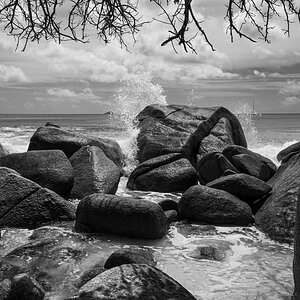
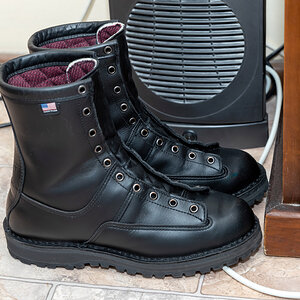
![[No title]](/data/xfmg/thumbnail/39/39476-6e232ea205145ad1a1da0690d7617642.jpg?1619739045)
![[No title]](/data/xfmg/thumbnail/39/39480-e4e26ffe5c6148262ac81eff975a5c0e.jpg?1619739047)
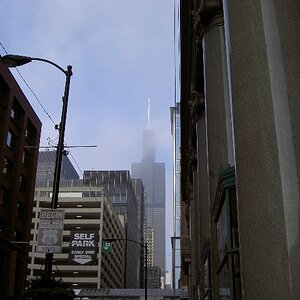
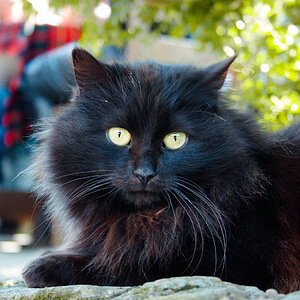
![[No title]](/data/xfmg/thumbnail/31/31756-ed344608f5fc9a69ff1d67dc7d03161c.jpg?1619734993)
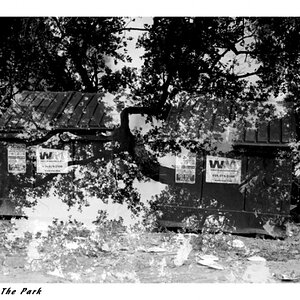
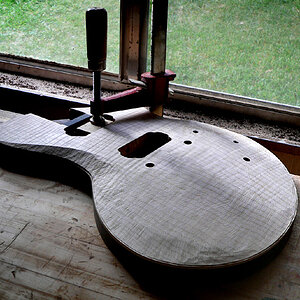
![[No title]](/data/xfmg/thumbnail/31/31747-2e2e2bda16938a6a1d5fd6120c558293.jpg?1619734987)

